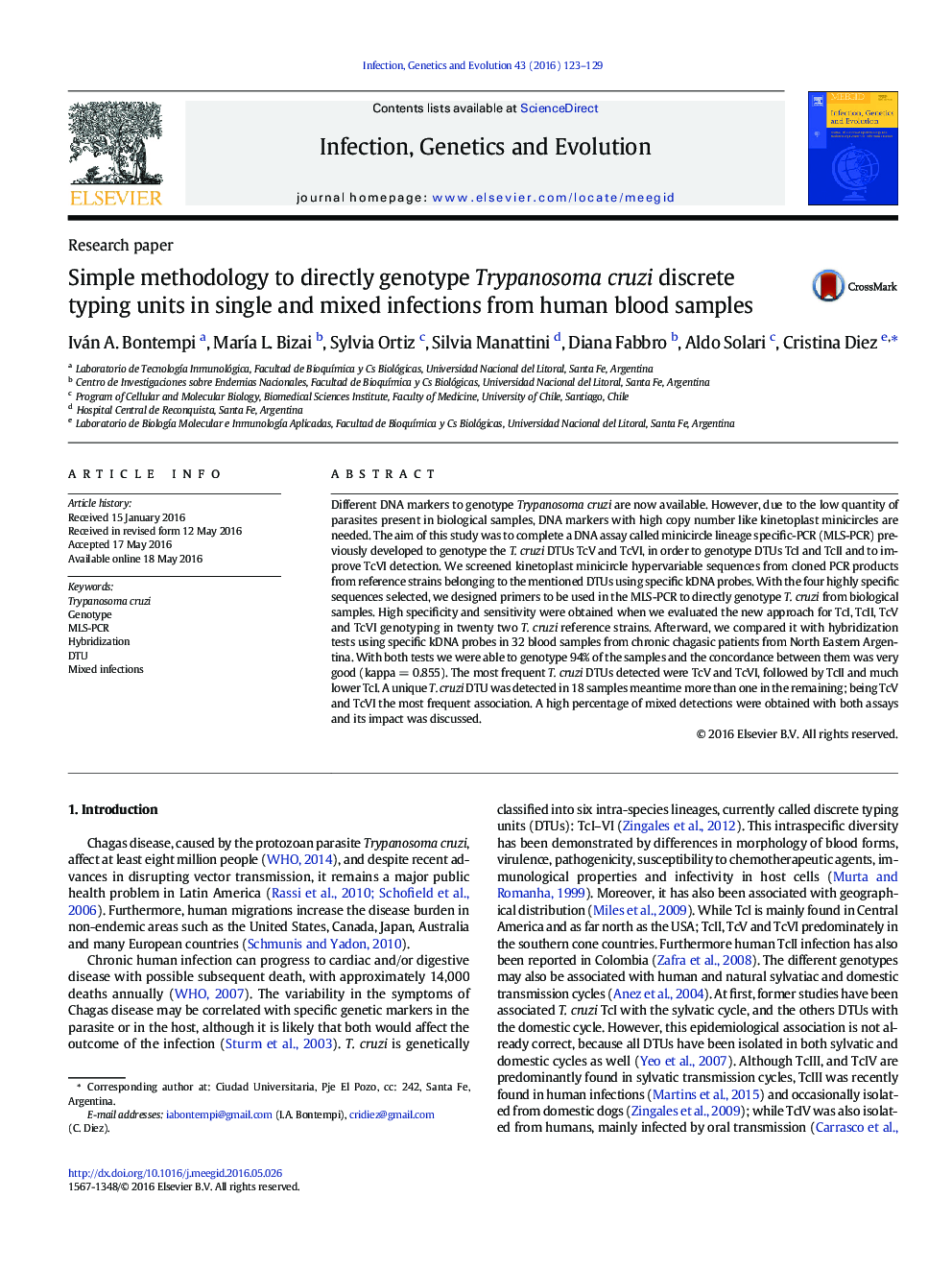| Article ID | Journal | Published Year | Pages | File Type |
|---|---|---|---|---|
| 2822948 | Infection, Genetics and Evolution | 2016 | 7 Pages |
•High specificity and sensitivity were obtained with MLS-PCR for T. cruzi genotyping.•The concordance between MLS-PCR and hybridization tests was very good (kappa = 0.855).•With MLS-PCR and hybridization tests we were able to genotype 94% of blood samples.•TcV and TcVI were the most frequent DTUs found in chronic chagasic patients.•A high percentage of mixed infections were obtained, mainly the mixture of TcV + TcVI.
Different DNA markers to genotype Trypanosoma cruzi are now available. However, due to the low quantity of parasites present in biological samples, DNA markers with high copy number like kinetoplast minicircles are needed. The aim of this study was to complete a DNA assay called minicircle lineage specific-PCR (MLS-PCR) previously developed to genotype the T. cruzi DTUs TcV and TcVI, in order to genotype DTUs TcI and TcII and to improve TcVI detection. We screened kinetoplast minicircle hypervariable sequences from cloned PCR products from reference strains belonging to the mentioned DTUs using specific kDNA probes. With the four highly specific sequences selected, we designed primers to be used in the MLS-PCR to directly genotype T. cruzi from biological samples. High specificity and sensitivity were obtained when we evaluated the new approach for TcI, TcII, TcV and TcVI genotyping in twenty two T. cruzi reference strains. Afterward, we compared it with hybridization tests using specific kDNA probes in 32 blood samples from chronic chagasic patients from North Eastern Argentina. With both tests we were able to genotype 94% of the samples and the concordance between them was very good (kappa = 0.855). The most frequent T. cruzi DTUs detected were TcV and TcVI, followed by TcII and much lower TcI. A unique T. cruzi DTU was detected in 18 samples meantime more than one in the remaining; being TcV and TcVI the most frequent association. A high percentage of mixed detections were obtained with both assays and its impact was discussed.
